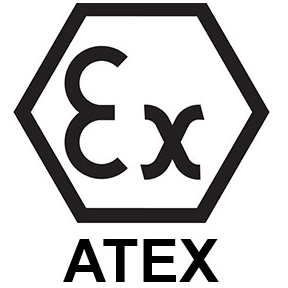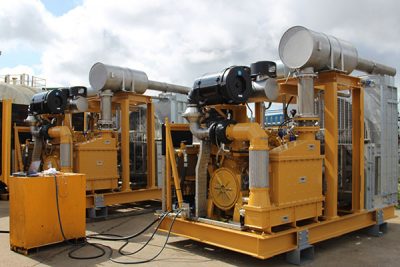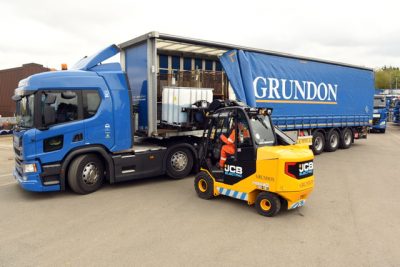ATEX Directive Definition – What is ATEX?

Ex Symbol, also known as EX marking or EX Sign.
ATEX refers to two European Directives. The use of explosion protection equipment in a potentially hazardous area is something which is a requirement from both the user and supplier of the explosion proof equipment.
The European ATEX legislation therefore has two different ATEX Directives. One for the user and one for the supplier.
ATEX Directive 2014/34/EU (ATEX 114) – applies to the manufacturer/supplier of ATEX equipment
The ATEX 2014/34/EU Directive (also known as ATEX 114) is for industries that supply equipment into hazardous area, for example a forklift supplier or well service equipment supplier. It was previously also known as ‘ATEX 95’ or ATEX 94/9/EC ‘the ATEX Equipment Directive’.
Equipment for operation in hazardous areas must comply with the requirements of ATEX 2014/34/EU Directive and be suitably protected.
ATEX equipment is built to a level of protection known as a category which matches the risk.
- ATEX Category 2G for Zone 1 hazardous areas
- ATEX Category 3G for Zone 2 hazardous areas
- ATEX Category 2D for Zone 21 hazardous areas
- ATEX Category 3D for Zone 22 hazardous areas
ATEX Directive 1999/92/EC (ATEX 153) – applies to the sites with hazardous areas
The ATEX 1999/92/EC Directive is for industries that operate with potentially explosive atmospheres, for example a chemical company. ATEX 1999/92/EC requires companies to manage the risk and the process safely. It is also now known as ATEX 153, but previously as ATEX 137 or 99/92/EC the “Worker Protection Directive”. Companies should:
- Prevent the formation of explosive atmospheres in the workplace OR
- avoid the ignition of explosive atmospheres
- Conduct a hazardous area risk assessment including the likelihood of explosive atmospheres and a source of ignition
ATEX Zone Classification, EPD and choosing ATEX Equipment
- Sites (such as a chemical plant, waste management site, oil and gas etc…) should classify the workplaces into hazardous area Zones depending on the frequency and time that an explosive atmosphere is present in the form of gas, vapour, powder or dust. For example:
- ATEX Zone 1 (high risk gas/vapour)
- ATEX Zone 2 (medium risk gas/vapour)
- ATEX Zone 21 (high-risk powder/dust)
- ATEX Zone 22 (medium risk powder/dust)
- Mark areas with Ex signs (also known as Ex Symbol or Ex marking) at point of entry
- Create and maintain an explosion protection document
- Select ATEX 2014/34/EU (ATEX 114) certified equipment according to the intended hazardous area Zones
For more information about ATEX requirements or certification, clarity on the ATEX Directive definitions or to understand how the ATEX Directives affect you on site, contact Pyroban directly.
Diesel engine explosion protection for ATEX Zone 2 hazardous areas offshore

- Explosion protection (ATEX) engine Kits – for multiple engine types used in well service equipment
- Explosion protection (ATEX) engine Packages – from leading OEMs for use in well service equipment
Explosion protection components
Pyroban manufactures a wide range of explosion proof (ATEX) components certified for use in hazardous areas.
- Ex Alternator (power)
- Ex Alternator (battery charging)
- Ex battery
- Super Insulated Pipes
- Shut-off Valves
- Spark arrestors
- Ex SCS
- PCS2
- Ex Starter motors
Explosion protection for forklift trucks in ATEX hazardous areas

- Zone 1 – ATEX 2G conversions
- Zone 2 – ATEX 3G conversions with Gas detection (system6000)
- Zone 2 – ATEX 3G conversions without Gas detection
- Zone 21 – ATEX 2D conversions
- Zone 22 – ATEX 3D conversions
Explosion protection for cranes, access platforms, scrubber driers…
For Cherry Pickers, scissor lifts, cranes, access platforms, scrubber driers, tractors and more, Pyroban provides ATEX certified conversions for use in Zone 1, 2, 21 and 22 hazardous areas.
Explosion proof enclosures
Examples of explosion proof enclosures, control panels and components can be seen here at www.ex-tech.fr.
Explosion proof lighting
Examples of explosion proof lighting including high efficiency LEDs for tough oil and gas applications can be seen here at www.petrel-ex.co.uk.
Explosion proof sounders, beacons and buttons
For explosion proof sounders, beacons, buttons and call points for hazardous areas visit ex-techsignalling.com.
Flameproof switches and transmitters
To see examples of flameproof switches and transmitters used in ATEX hazardous areas visit www.pyropress.com.
